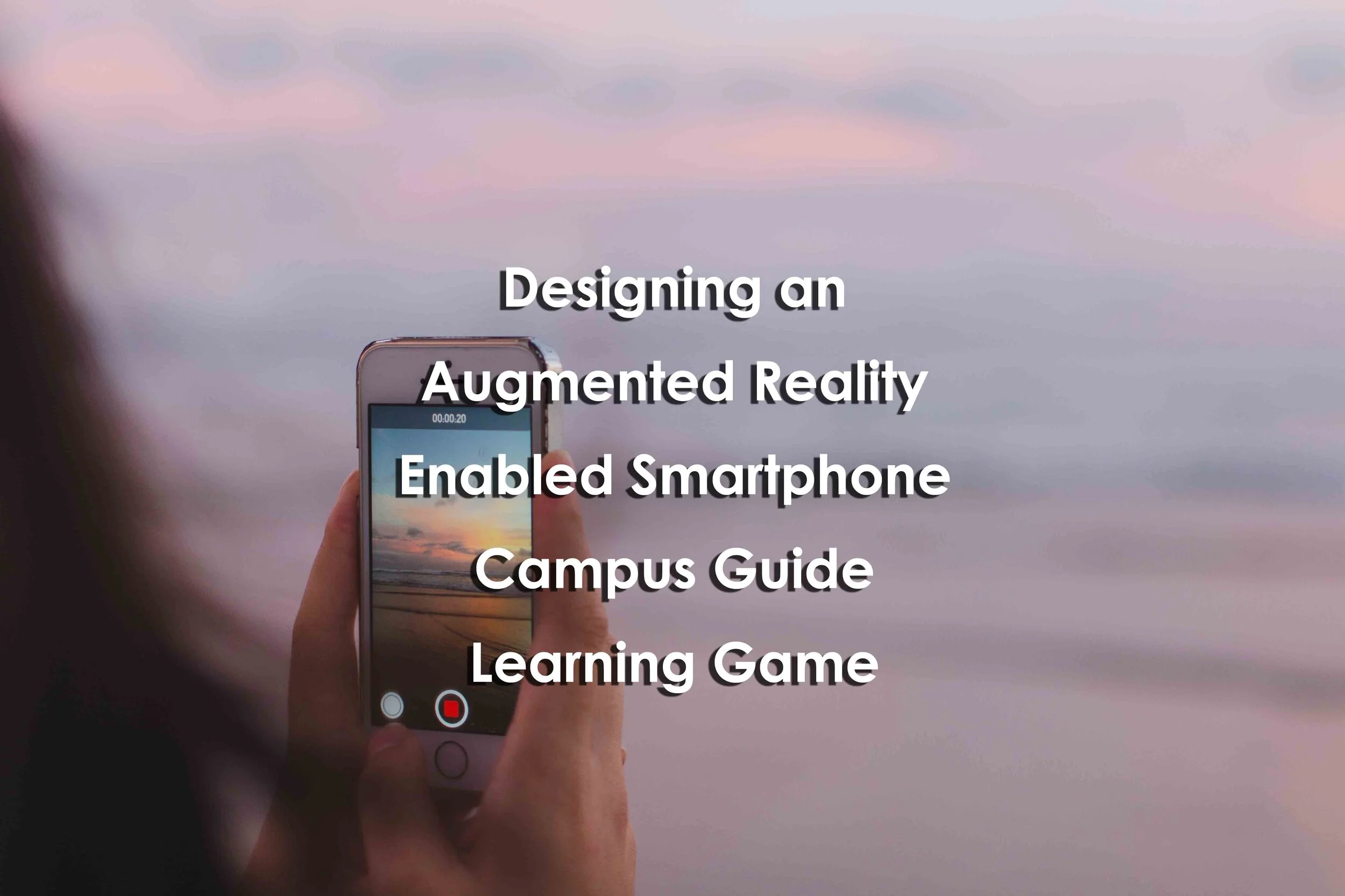Designing an Augmented Reality Enabled Smartphone Campus Guide Learning Game
Designing an Augmented Reality Enabled Smartphone Campus Guide Learning Game
Designing an Augmented Reality Enabled Smartphone Campus Guide Learning Game
Samuel Taylor
Abstract
"The following paper details a research project concerned with the design, implementation, and assessment of the educational impact of a digital mobile learning game on learning and pedagogy in Japanese higher education. It describes KSU T ea e H e a i c-developed educational smartphone application that utilizes Augmented Reality technology and learning game design principles to expedite the contextual learning of campus facilities. Grounded in a Design-Based Research approach, the paper describes multiple sources of evidence including end-user survey data and anecdotal evidence generated from researcher and stakeholder testing, and is grounded in references to underlying theoretical assumptions and design principles. These include the ability of Augmented Reality materials to enable engagement with higher-level problems, gamified narratives, a d he di c e f hidden c e B ief di c i f the use of Augmented Reality in educational contexts, and Augmented Reality-enabled campus knowledge systems, suggests that Unity 3D software can be used to reduce the technical complexity of location-based applications, through the negation of the need for location-tracking technology. Description of the application is achieved through explanations of the identification of application requirements, which are shown to consist of technical, experiential, and narrative components, as well as, the design of the application system architecture, which allows the user to be immersed into the learning of campus services. A focus on the design of the learning game reveals how instructional goals, instructional content, and game mechanics are integrated with he fi h ee le el f Bl m a m-remember, understand, and apply so that a 3-level, multiple-choice format structure requires application users to engage progressively higher-level thinking skills. It is shown how an end-user survey was used to select instructional content, and how scoring and feedback were integrated to encourage both the learning of content and game progression. Testing-based refinement of the learning game is discussed before the paper concludes with plans for the testing of the application by instructors and students upon publication in the Autumn of 2020."
Reference
Taylor, S. (2020, September). Designing an Augmented Reality Enabled Smartphone Campus Guide Learning Game. In European Conference on Games Based Learning (pp. 604-XIX). Academic Conferences International Limited. https://www.researchgate.net/publication/344680184_Designing_an_Augmented_Reality_Enabled_Smartphone_Campus_Guide_Learning_Game
Keywords
Digital learning game, Mobile augmented reality, Game-based learning, Design-based research, Educational smartphone application

